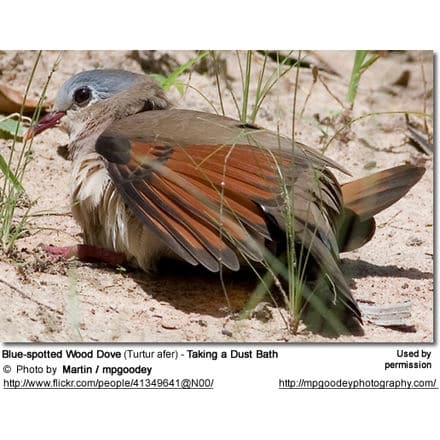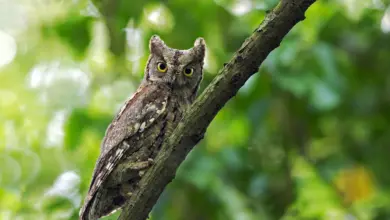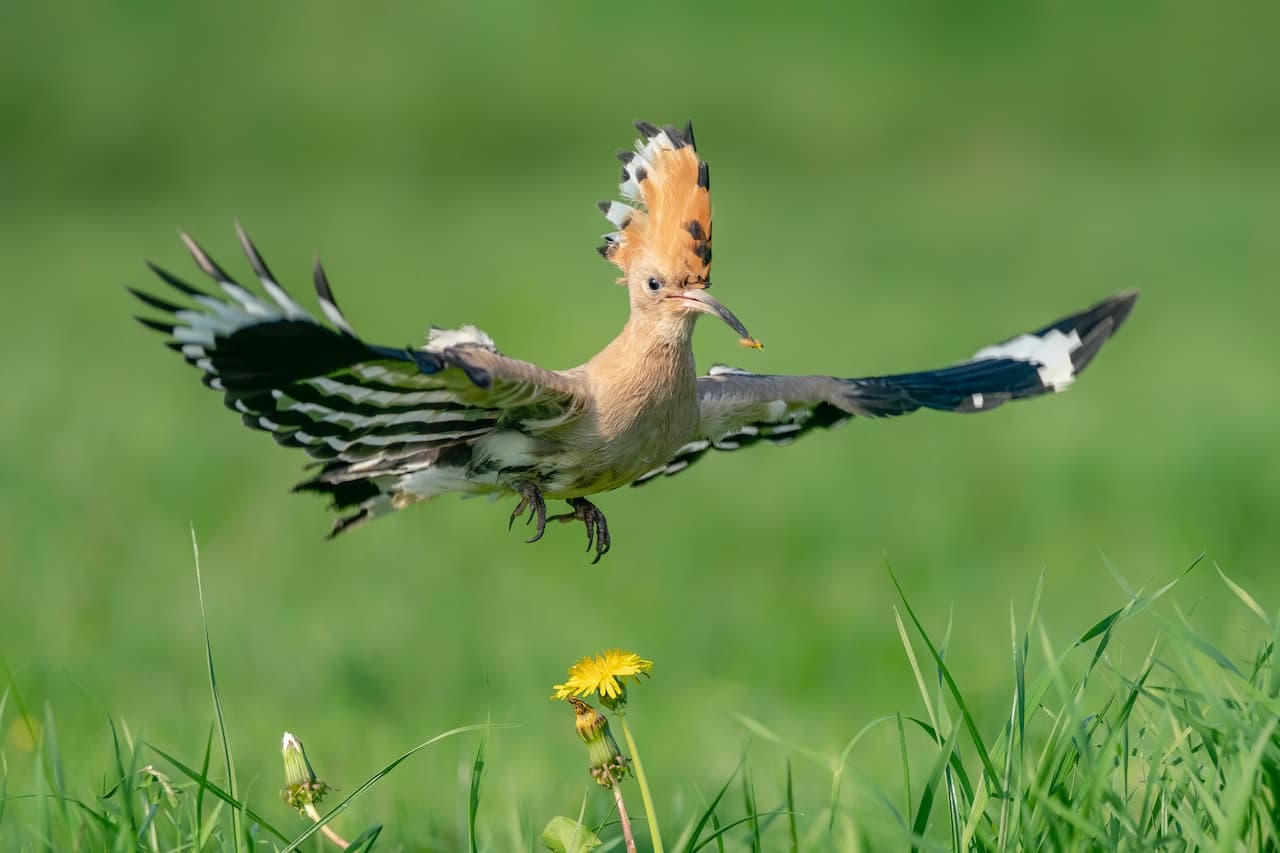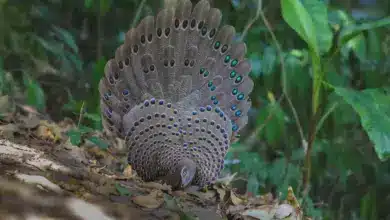Blue-spotted Wood Doves
The Blue-spotted Wood Doves (Turtur afer) – also known as Abyssinian or Senegal Blue-spotted Wood Doves, Metal-spotted Wood Doves, Red-billed Wood Doves, Red-billed Wood Doves, or Sapphire-spotted Wood Doves – are widespread in a belt across Africa just south of the Sahara Desert.
Populations found in the highlands of Ethiopia were previously separated as subspecies Turtur afer mearnsi, and those occurring in the Mount Kilimanjaro zone as Turtur afer kilimensis – however, these forms are now considered invalid; and are all lumped together.
These wood doves are closely related to the similar Emerald-spotted Wood Doves, Turtur chalcospilos, and Black-billed Wood Doves, Turtur abyssinicus – all of which have partly overlapping ranges, but don’t appear to interbreed.
Distribution / Habitat
The Black-billed Wood Doves occur in the drier parts of tropical Africa, north of the equator.
Specifically, they are found in South Mauritania, Senegal, Gambia, Togo, Benin, Nigeria, east through northern Cameroon, north central African Republic to Eritrea (at the very east end of Africa) south to Ethiopia, northern Uganda, and extreme northwestern Kenya. They were also said to occur on the island of Bioko (traditionally called Fernando Pó) – an island off the west coast of Africa – but this is now considered unlikely.
The Blue-spotted Wood-Doves are found in woodland and scrublands close to bodies of water.
They are resident (non-migratory) throughout their range and are commonly found near deserts, scrub, and savannah.
These pigeons are usually seen alone or in pairs but may form large flocks at waterholes or favored feeding areas.
Further Dove Information
- Dove Information
- Index of Dove Species
- Photos of the Different Dove Species for Identification
- Doves & Pigeons as Pets

Description
Blue-spotted Wood Doves are small plump pigeons that measure 8.7 inches (22 cm) in length and weigh about 2.3 oz (65 grams).
The head is grey, with a reddish bill. The back, wings, and tail are pale brown and the throat is grey. There are two dark bands across the lower back and tail. The folded wings have distinctive dark glossy patches that can look either black or bluish, depending on the light conditions.
The legs and feet are red, and the eyes are brown.
Flight: Their flight is quick and characterized by regular beats and occasional sharp flicks of the wings, and they generally fly low. In flight, the chestnut markings in the underwings are visible.
Gender ID: Males and females look alike.
Juveniles are duller than adults. They are scaly below and lack the wing spots.
Nesting / Breeding
Pairs are monogamous, establishing firm bonds that last a lifetime. They build flimsy stick nests in the branches of trees (often acacias) or bushes making sure that the nests are well hidden in dense green foliage.
The average clutch consists of two cream-colored eggs.
The parents take turns incubating the eggs for about 13 – 17 days to hatching and the nestlings fledge (leave the nest) about 2 weeks later. Pairs raise their young jointly to independence.
Diet / Feeding
Blue-spotted Wood-Dove mostly feeds on various seeds, fallen fruits, and insects such as butterflies, bees, wasps, locusts, and ants. Most foraging occurs on the ground or low down in the shrubs.
Calls / Vocalizations
Their calls are described as soft long coo-coo, followed by a series of slow descending coos lasting about 10 seconds, and ending with 4 seconds of rapid coos that decrease in volume.
Alternate (Global) Names
Afrikaans: Blouvlekduifie … Chinese: ???? … Czech: Hrdlicka modroskvrnná, hrdli?ka modroskvrnná … Danish: Stålpletdue … Dutch: Staalvlekduif, Zwartsnavelduif … Estonian: sinitähn-halatuvi … Finnish: Sinitäpläkyyhky … French: Colombe africaine, Emeraudine à bec rouge, Émerauldine à bec rouge, Petite tourterelle africaine, Tourtelette améthystine, Tourterelle améthystine … German: Stahlflecktaube … Italian: Tortora boschereccia macchieblu, Tortora macchiata di blu … Japanese: aofubato … Lithuanian: Melsvatékis purplelis … Norwegian: Blåflekkalvedue … Polish: turkaweczka modroplamkowa … Portuguese: Rola-de-manchas-azuis … Russian: ???????????????? ?????? ??????? … Slovak: bronzovka malá … Spanish: Paloma de Alas Azules, Palomita Aliazul … Swahili: Pugi-wanda … Swedish: Blåfläckduva






